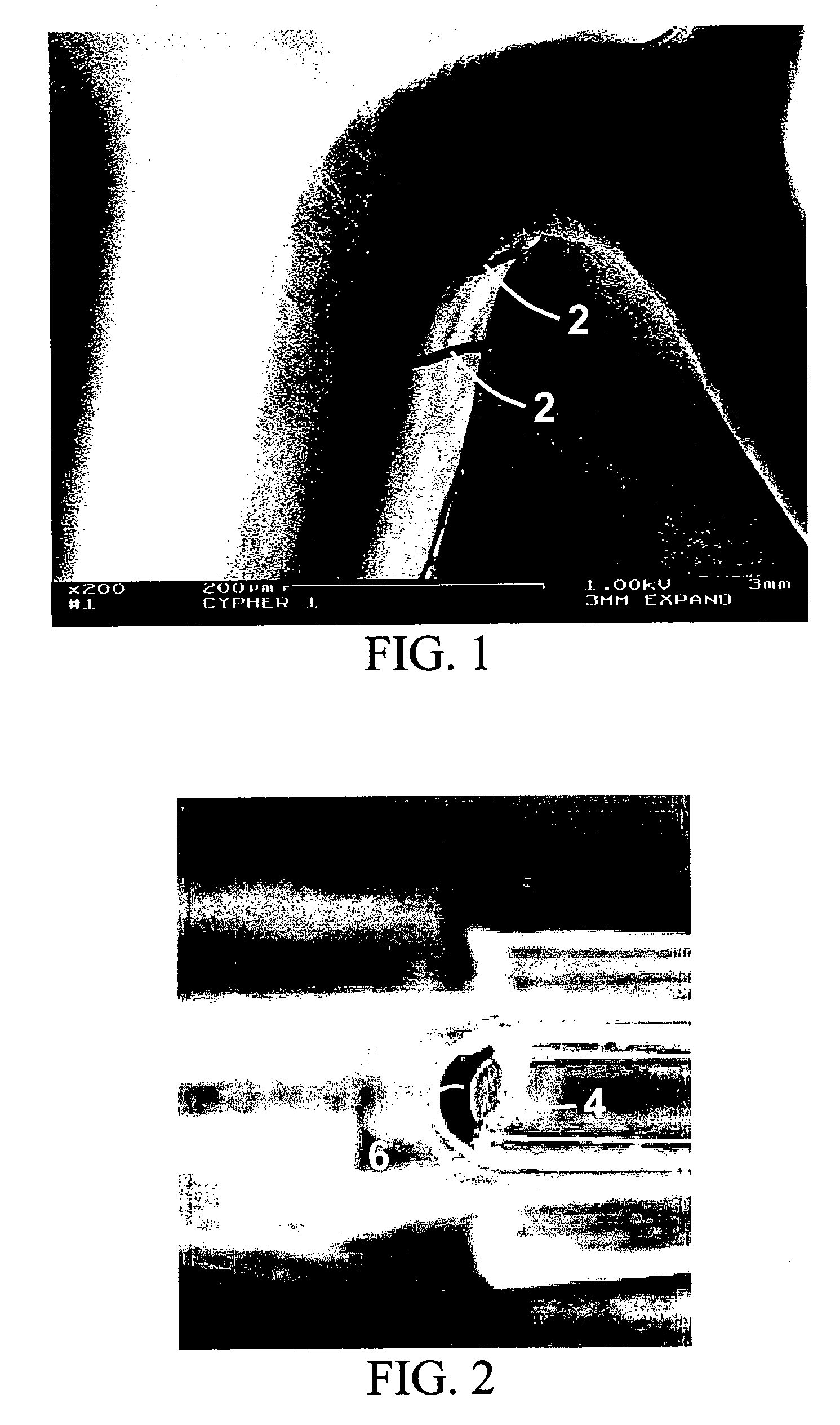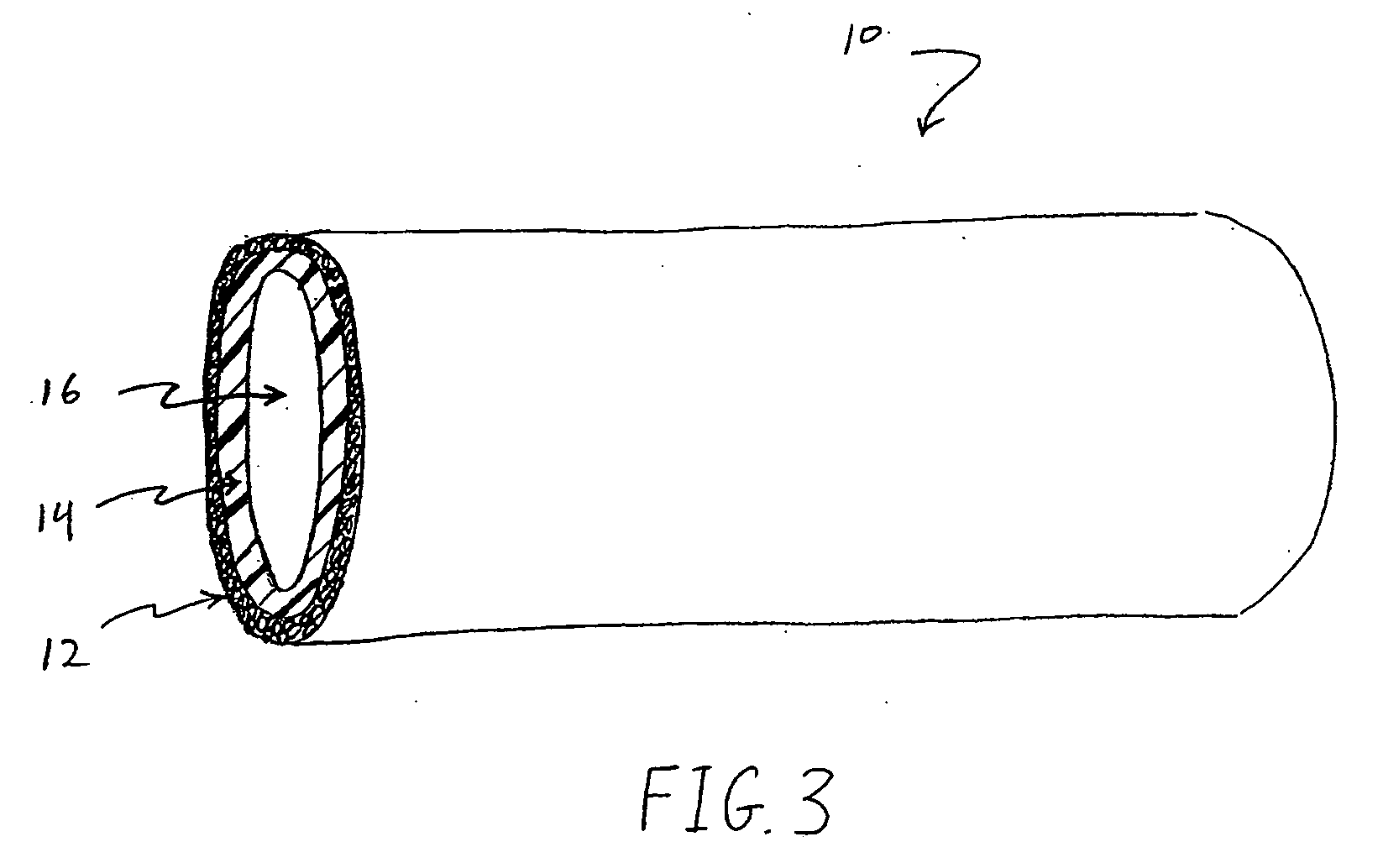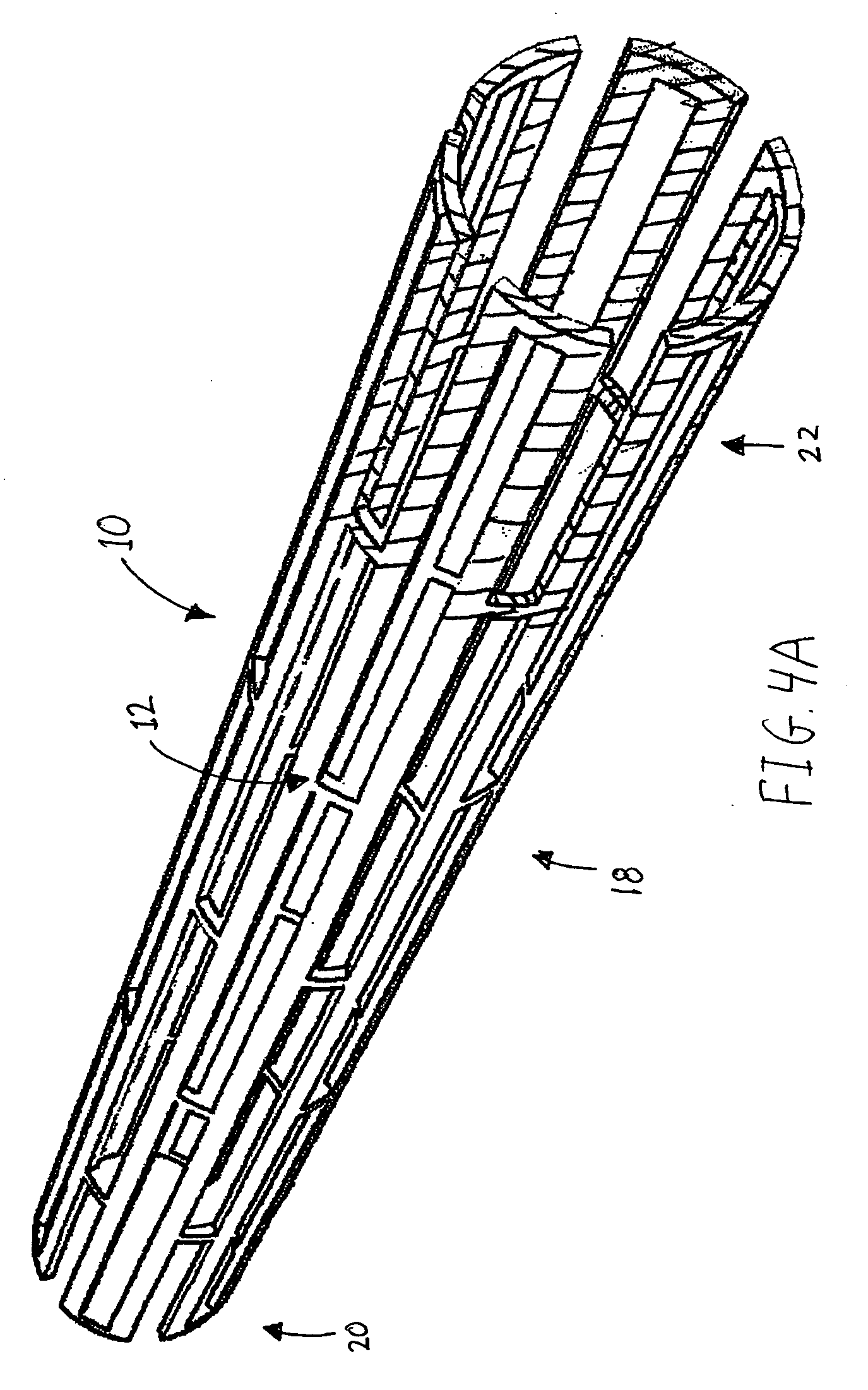Method for loading nanoporous layers with therapeutic agent
a nanoporous layer and therapeutic agent technology, applied in the field of porous layer medical devices, can solve the problems of porous alumina with severe mechanical integrity problems, limited coating adhesion, inflammatory properties, etc., and achieve the effect of reducing the risk of delamination
- Summary
- Abstract
- Description
- Claims
- Application Information
AI Technical Summary
Benefits of technology
Problems solved by technology
Method used
Image
Examples
example 1
1. EXAMPLE 1
[0249] A first composition can be prepared by mixing the following components:
[0250] (a) between about 0.1 mass % and about 15 mass %, for example, about 2.0 mass % of EVAL; and
[0251] (b) the balance of DMAC solvent.
[0252] The first composition can be applied onto a dealloyed porous layer, for example, by spraying or dipping, to form the topcoat layer. The topcoat layer can have, for example, a total solids weight of about 250 μg.
[0253] A second composition can be prepared by mixing the following components:
[0254] (c) between about 0.1 mass % and about 15 mass %, for example, about 2.0 mass % of EVAL;
[0255] (d) between about 0.1 mass % and about 5 mass %, for example, about 1.0 mass % of DURAFLO; (e) between about 25 mass % and about 30 mass %, for example, 27.85 mass % of dimethylsulfoxide (DMSO) solvent;
[0256] (f) between about 5 mass % and about 6 mass %, for example, 5.65 mass % of tethrahydrofurane (THF) solvent; and (g) the balance, DMAC solvent.
[0257] The ...
example 2
2. EXAMPLE 2
[0258] A first composition can be prepared by mixing the following components:
[0259] (a) between about 0.1 mass % and about 15 mass %, for example, about 2 mass % of EVAL; and
[0260] (b) the balance, DMAC solvent.
[0261] The first composition can be applied onto the dealloyed porous layer, for example, by spraying, to form the topcoat layer having a total solids weight of about 300 μg.
[0262] A second composition can be prepared by mixing the following components:
[0263] (c) between about 0.1 mass % and about 15 mass %, for example, about 2.0 mass % of EVAL;
[0264] (d) between about 0.1 mass % and about 5 mass %, for example, about 1.0 mass % of poly(ethylene glycol) having molecular weight of about 5,000 Daltons (PEG5000); and
[0265] (e) the balance, DMAC solvent.
[0266] The second composition can be applied onto the dried topcoat layer, for example, by spraying or dipping, to form the finishing coat layer having a total solids weight of about 200 μg.
example 3
3. EXAMPLE 3
[0267] A first composition can be prepared by mixing the following components:
[0268] (a) between about 0.1 mass % and about 15 mass %, for example, about 2 mass % of EVAL; and
[0269] (b) the balance, DMAC solvent.
[0270] The first composition can be applied onto the dried drug-polymer layer, for example, by spraying, to form the topcoat layer having a total solids weight of about 300 μg.
[0271] A second composition can be prepared by mixing the following components:
[0272] (c) between about 0.1 mass % and about 15 mass %, for example, about 1.3 mass % of EVAL;
[0273] (d) between about 0.1 mass % and about 5 mass %, for example, about 0.7 mass % of PEG5000; and
[0274] (e) the balance, DMAC solvent.
[0275] The second composition can be applied onto the dried topcoat layer, for example, by spraying or dipping, to form the finishing coat layer having a total solids weight of about 200 μg.
PUM
| Property | Measurement | Unit |
|---|---|---|
| pressure | aaaaa | aaaaa |
| pressure | aaaaa | aaaaa |
| pressure | aaaaa | aaaaa |
Abstract
Description
Claims
Application Information
 Login to View More
Login to View More - R&D
- Intellectual Property
- Life Sciences
- Materials
- Tech Scout
- Unparalleled Data Quality
- Higher Quality Content
- 60% Fewer Hallucinations
Browse by: Latest US Patents, China's latest patents, Technical Efficacy Thesaurus, Application Domain, Technology Topic, Popular Technical Reports.
© 2025 PatSnap. All rights reserved.Legal|Privacy policy|Modern Slavery Act Transparency Statement|Sitemap|About US| Contact US: help@patsnap.com



